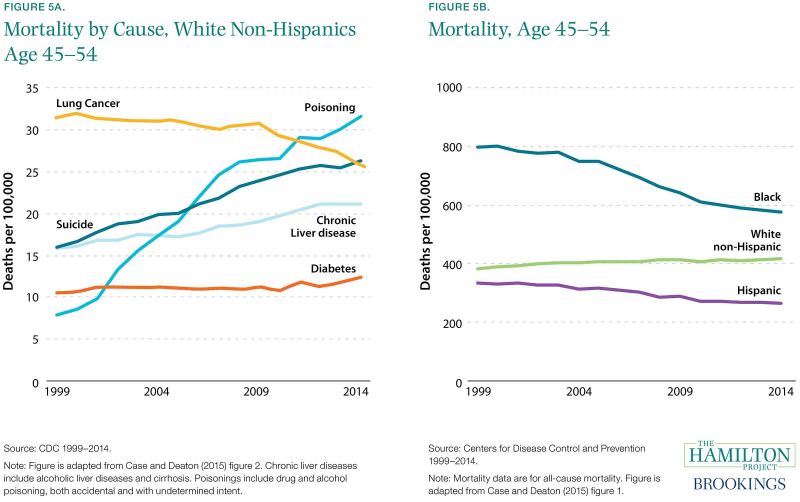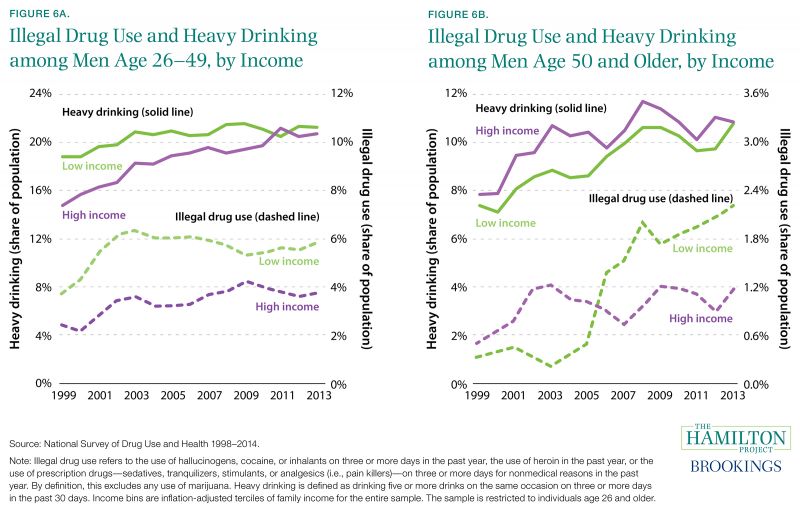Life expectancy—the average remaining years an individual of a particular age can be expected to live—is perhaps the most valuable indicator of social progress. Americans have enjoyed an overall gain of about 25 years in life expectancy at birth during the past century. Reductions in mortality have continued in recent years for many Americans, including non-whites (Figure 5B), the young, and those with higher incomes. Yet for other demographic groups, progress has stalled or even reversed. Disparities in life expectancy persist and some recent trends in mortality are cause for alarm.
A Hamilton Project policy forum on “Divergence in American Life Expectancy,” taking place on Wednesday, June 29th at the Brookings Institution, will aim to address these issues. The policy implications of life expectancy trends will be discussed by some of our nation’s leading scholars and stakeholders in the areas of economic and healthcare policy.

Research by forum participants Anne Case and Nobel Laureate Angus Deaton (both of Princeton University) has tied recent rises in mortality to the increasing rate of suicides as well as alcohol and drug-related deaths (Figure 5A). Although heavy drinking has increased across the income spectrum, low-income men in particular have reported increasing rates of illicit drug usage (Figures 6A and 6B). In addition, smoking rates have fallen more quickly for high-income Americans, potentially driving some of the divergence in mortality.

Separate research by forum participant David Cutler (of Harvard University) has examined disparities in life expectancy across geographic locations. Cutler and his coauthors found that there are large differences among Americans at the bottom of the income distribution: the life expectancy of a man with income in the bottom quartile was five years shorter in a commuting zone with the lowest longevity relative to a commuting zone with the highest longevity.
Disparities in life expectancy matter for our social insurance programs. Research by forum participant Gary Burtless (of the Brookings Institution) and coauthors demonstrates that higher-income workers tend to retire later—thereby receiving increased monthly benefits—and collect Social Security benefits for longer due to their longer life expectancy. This must be taken into consideration when considering reforms to Social Security (such as raising the retirement age).
Angus Deaton, Anne Case, and Gary Burtless will join fellow panelists James Marks (of the Robert Wood Johnson Foundation) and Mark McClellan (of Duke University) to discuss life expectancy trends and policy options at the June 29th Hamilton Project policy forum. In conjunction with the event, The Hamilton Project will release a new framing paper that synthesizes research and policy discussions regarding the changing landscape of American life expectancy.




